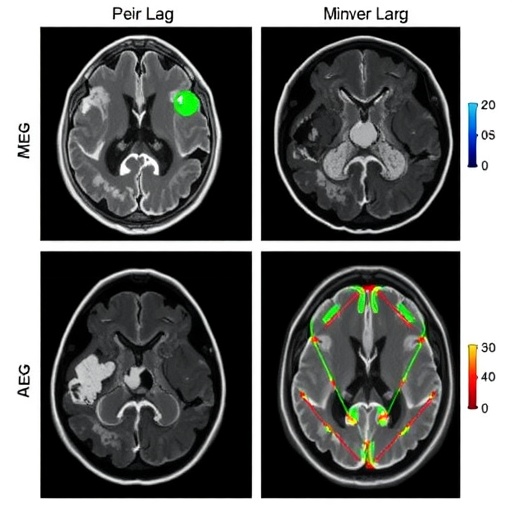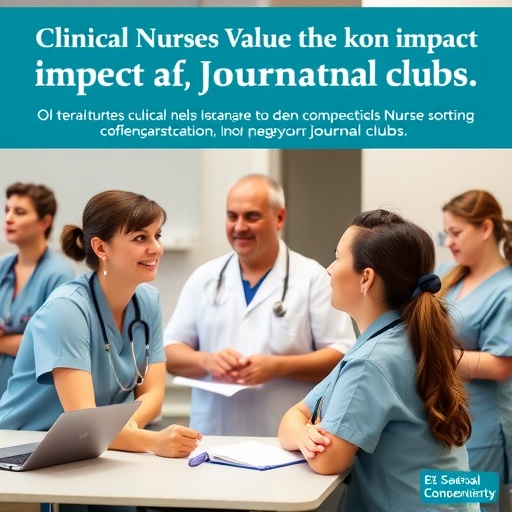In recent years, the alarming rise in antibiotic resistance has emerged as a substantial public health concern, particularly in the neonatal population. A groundbreaking study conducted by Sağlam and colleagues sheds light on the increasing frequency of antibiotic and multidrug-resistant organisms (MDROs) in cases of urinary tract infections (UTIs) among newborns. This research, published in BMC Pediatrics, highlights critical findings that could reshape how healthcare professionals approach the prevention and treatment of UTIs in neonates.
Urinary tract infections are among the most prevalent infectious diseases encountered in infants. With the increasing incidence of UTIs, especially in neonates, public health initiatives are becoming increasingly urgent. The study emphasizes the dire need for increased awareness regarding the pathogens responsible for these infections and their propensity for creating resistance against conventional antibiotic treatments. This forms the backdrop for the exploration of UTI-associated antibiotic resistance trajectories in neonatal populations.
One critical aspect of the research is the methodical examination of various bacterial isolates obtained from neonatal patients diagnosed with UTIs. The study meticulously outlines the clinical microbiology and identifies the specific strains of bacteria that contribute to antibiotic resistance. By analyzing the patterns of these infections over time, the research reveals a worrying trend: the emergence of increasingly resistant bacterial strains, which poses a significant threat to neonatal health. Each bacterial strain exhibits distinct characteristics that influence its ability to resist antimicrobial treatments, warranting a deeper understanding of these pathogens.
The findings of this study are underpinned by rigorous statistical analyses that draw from a vast pool of clinical data. By employing advanced microbiological techniques, the researchers evaluated susceptibility profiles of bacterial strains to various antibiotics. This rigorous analysis unveils the stark reality of treatment failures experienced in neonatal UTIs, highlighting the urgent need for updated clinical guidelines that take these resistance patterns into account. The implications of these findings could influence clinical decision-making and antibiotic stewardship in healthcare settings dedicated to neonatal care.
Significantly, the research outlines the mechanisms through which bacterial pathogens develop resistance. Understanding these mechanisms is vital for developing new strategies for treatment and prevention. The ability of bacteria to acquire resistance traits, whether through vertical gene transmission or horizontal gene transfer, underscores the complexity of combating these pathogens. This study promotes the notion that addressing antibiotic resistance effectively will require a multifaceted approach, combining improved surveillance, infection control measures, and the stewardship of existing antibiotic resources.
An essential part of the findings pertains to the risk factors associated with multidrug-resistant infections in this vulnerable population. The study identifies several key contributors, including prolonged hospitalization, previous antibiotic exposure, and underlying medical conditions. By illuminating these risk factors, the research advocates for targeted prevention strategies that could mitigate the risk of UTI development in neonates. This information could empower healthcare providers to prioritize patient care and implement proactive measures to safeguard their patients’ health in neonatal units.
The rise of antibiotic-resistant infections is not confined solely to the neonatal population; it reflects a broader global health challenge that demands immediate attention. This study serves as a clarion call for health policymakers and clinicians to recognize the gravity of the antibiotic resistance crisis. With pediatric populations at greater risk, targeted interventions and research funding are crucial for combating antibiotic resistance on a more extensive scale.
In light of these findings, the research encourages a paradigm shift in the way healthcare professionals manage UTIs in neonates. Traditional approaches to treatment may no longer suffice, as the landscape of bacterial resistance evolves. There is a growing consensus that clinicians should adopt a personalized approach to antibiotic therapy, considering each patient’s unique microbiome and their history of antibiotic exposure before initiating treatment.
One innovative response to the crisis proposed by the researchers is the exploration of alternative therapies, including the use of bacteriophages or probiotics. Since these options target specific pathogens without promoting resistance, they could represent a promising avenue for future treatment regimens. Continued investigation into these alternatives may offer a complementary approach alongside traditional antibiotics, thus expanding the therapeutic arsenal available for UTI management in neonatal care.
Moreover, the significance of the educational component should not be underestimated. Raising awareness among healthcare providers about the threats posed by antibiotic resistance, especially in vulnerable populations, can lead to more informed clinical practices. Training programs aimed at increasing understanding of antibiotic stewardship principles could help minimize unnecessary antibiotic use and promote adherence to guidelines regarding infection management.
Furthermore, the role of family education is critical in the context of UTI awareness and prevention. Engaging parents in understanding the implications of antibiotic use, as well as providing guidance on proper hygiene and diaper care, could be instrumental in preventing infections from developing in the first instance. Creating a more informed community around neonatal health care can lead to improved outcomes for infants at risk of UTIs.
As the research continues to unfold, it becomes increasingly clear that antibiotic resistance poses a significant ongoing challenge, but it is not insurmountable. The collaborative efforts of researchers, healthcare providers, and policymakers must be harnessed to address this multifaceted issue effectively. With a unified approach that emphasizes prevention, treatment, and education, there stands a chance to curb the rising tide of antibiotic resistance among neonatal populations.
In summary, the alarming ascension of antibiotic resistance in UTI cases within neonates reveals critical gaps in current healthcare practices and necessitates a coordinated response. The collaborative findings of Sağlam et al. serve as both a wake-up call and a guide for future actions, ultimately steering the focus towards safeguarding the health of our most vulnerable patients. A concerted effort to understand and mitigate these challenges will pave the way for more effective management of neonatal UTIs, preserving the efficacy of antibiotics for generations to come.
Subject of Research: Antibiotic and multidrug resistance in neonatal urinary tract infections.
Article Title: The rising threat of antibiotic and multidrug resistance in neonatal urinary tract infections.
Article References: Sağlam, M.K., Yanaşoğlu, E., Sav, N.M. et al. The rising threat of antibiotic and multidrug resistance in neonatal urinary tract infections.
BMC Pediatr 25, 824 (2025). https://doi.org/10.1186/s12887-025-06210-6
Image Credits: AI Generated
DOI: 10.1186/s12887-025-06210-6
Keywords: Antibiotic resistance, neonatal urinary tract infections, multidrug resistance, public health, pediatrics, infection control, bacteriophages, probiotics.
Tags: antibiotic resistance in newbornsantibiotic resistance trends in pediatricsantibiotic treatment challenges in infantsclinical microbiology of neonatal UTIshealthcare approaches to neonatal infectionsincreasing incidence of UTIs in infantsmultidrug-resistant organisms in infantsneonatal population health initiativesneonatal urinary tract infectionsprevention of urinary tract infections in newbornspublic health concerns neonatal infectionsUTI pathogens in neonates





